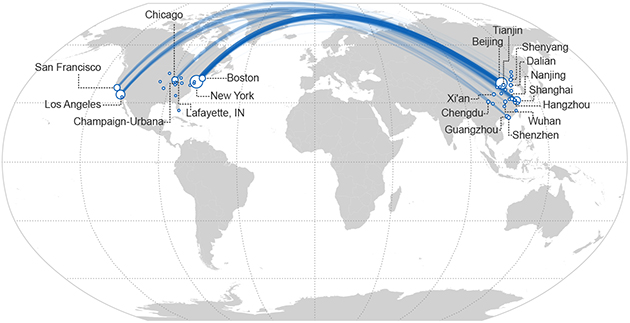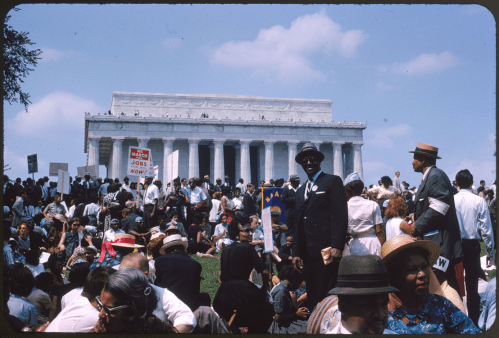China to U.S. Flows of Foreign Students, by Hometown and U.S. Metro Area Destination, 2008–2012

Note: This map shows the cities in China that are hometowns for at least 1,500 students in the U.S. It depicts the five largest flows of students from each of these cities to their metropolitan area place of study in the U.S.
Earlier this week at the APEC summit, President Obama proposed reducing the annual visa renewal requirement for Chinese foreign students studying in the United States to every five years. Additionally, Obama and Chinese President Xi Jinping announced that visas for tourists and business travelers between China and the United States would extend from one to 10 years for citizens of both nations.
China is the largest source of foreign students to the United States, sending nearly 285,000 foreign students on F-1 visas from 2008 to 2012 to study for bachelor’s degrees or higher. Most Chinese students are studying subjects highly sought by companies around the world, such as business (35 percent) and engineering (17 percent).
These proposed visa extensions would make it easier for Chinese students to complete their degree programs without having to worrying about renewing their visas. Furthermore, it can allow them to easily travel back to the United States to conduct business if they end up going home to work for a Chinese employer after they graduate.
As I wrote earlier this year, foreign students—offering valuable knowledge of the business, cultural, and societal norms of their cities and countries of origin—can help build economic linkages that benefit both sending and destination economies.
First, they open up markets in their home cities, which facilitates trade, foreign direct investment and knowledge transfer. Most Chinese foreign students come from large, fast-growing cities in emerging China that have close trade links with the United States: Beijing (18 percent), Shanghai (10 percent), Nanjing (3 percent) and Guangzhou (3 percent).
In addition, they inject spending into U.S. metropolitan economies and they help fill demand for jobs requiring specific skills in local labor markets. Chinese foreign students contributed almost $7 billion in tuition dollars and almost $4 billion in living expenses to metropolitan economies during the 2008-2012 period. The economic impact is substantial for top the destination: Purdue University (Lafayette, Ind.), University of Illinois (Champaign-Urbana, Ill.), Michigan State University (Lansing, Mich.), University of Southern California (Los Angeles, Calif.), and Ohio State University (Columbus, Ohio).
To build upon this visa agreement, local leaders should leverage foreign student connections with their home communities abroad to facilitate and deepen economic exchange.
This U.S.-China visa agreement still does not reform our federal immigration system—something that the new Republican-dominated Congress and the president must resolve. But this is an important step in building economic bridges between Chinese cities and U.S. metropolitan areas.


Commentary
U.S. and China Building Bridges with New Visa Agreement
November 14, 2014